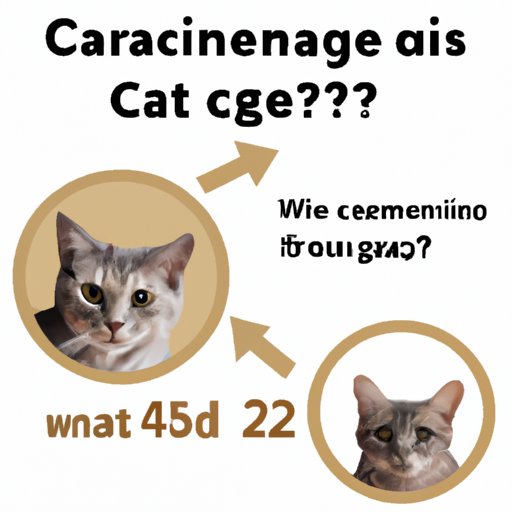
Introduction
Cats are wonderful pets and beloved companions to millions of people. They come in all shapes, sizes, and colors, and each cat has its own unique personality. However, one thing that many cat owners may not know is that it can be challenging to determine a cat’s age just from looking at them. This article is designed to help cat owners learn how to tell how old their cat is.
Why is it important to know a cat’s age?
Knowing a cat’s age is essential for providing proper nutrition and healthcare. Young kittens have different nutritional needs than adult cats, and senior cats require specialized care to maintain quality of life. By knowing your cat’s age, you can make sure that they get the appropriate care they need at each stage of their life. Additionally, understanding your cat’s age can help you form a stronger bond with them and anticipate their unique needs.
Factors to consider when determining a cat’s age
There are several physical characteristics that can help estimate a cat’s age, including their teeth, eyes, and fur. However, it’s important to understand that not all cats develop at the same rate. Factors such as breed and overall health can also influence the estimation of a cat’s age. For example, some breeds may have slower or faster dental development than others. Additionally, malnourished or sick cats may have stunted growth or delayed aging.
How to use physical characteristics to estimate a cat’s age
When trying to estimate a cat’s age, start by looking at their teeth. Kittens typically start losing their baby teeth at around four months of age. By six months, they should have all of their permanent teeth. As they get older, their teeth can become worn and discolored. Adult cats often develop tartar buildup, which can be a sign of poor dental health.
Another key factor to consider is the cat’s eyes. Kittens typically have bright, clear eyes. As they get older, their eyes may begin to develop cloudiness or other signs of age-related changes.
Fur can also be a good indicator of a cat’s age. Kittens have softer, fluffier fur than adult cats, and their coat may be more uniform in color. Older cats may have thinning fur, bald patches, or graying hair.
By examining these physical characteristics, you can estimate your cat’s age within a reasonable range. However, keep in mind that these are just rough estimates, and some cats may develop at a different rate than others.
When to seek professional help
Determining a cat’s age can be tricky, especially if you’re not familiar with the physical characteristics to look for. In some cases, it may be necessary to seek professional help. A veterinarian can provide a more accurate estimate of your cat’s age based on a physical examination and other factors, such as their medical history.
When looking for a vet, make sure to choose a reputable and experienced professional. Ask friends or family members for recommendations, or search online for reviews and ratings. A good vet will be able to answer your questions and provide guidance on how to best care for your cat at each stage of their life.
Conclusion
Determining your cat’s age can be a fun and informative experience. By examining their teeth, eyes, and fur, you can estimate their age within a reasonable range. However, keep in mind that some cats may develop at a different rate than others, and that getting a professional opinion from a veterinarian may be necessary in some cases. By understanding your cat’s age and unique needs, you can provide them with the best possible care and form a stronger bond with them.




